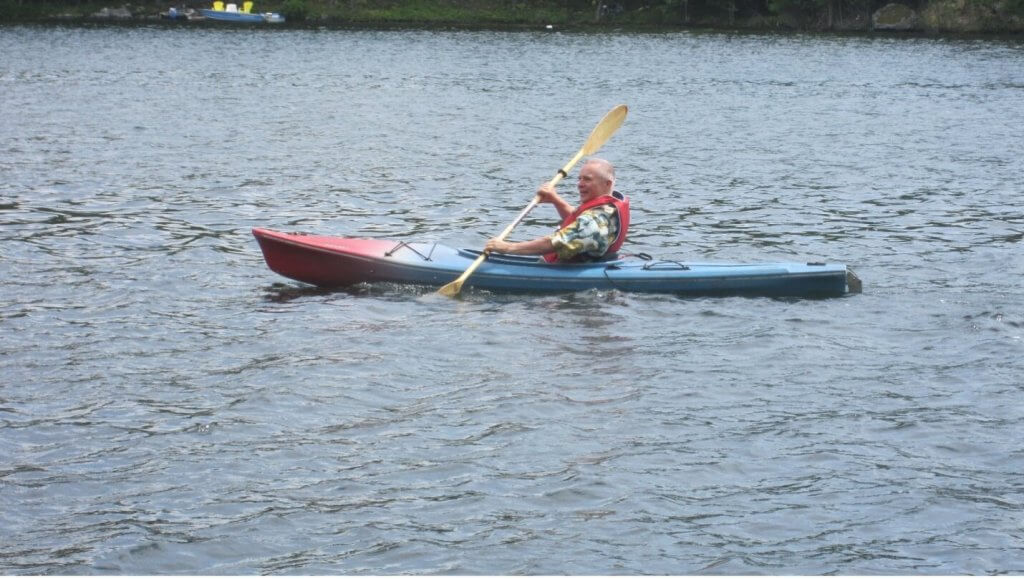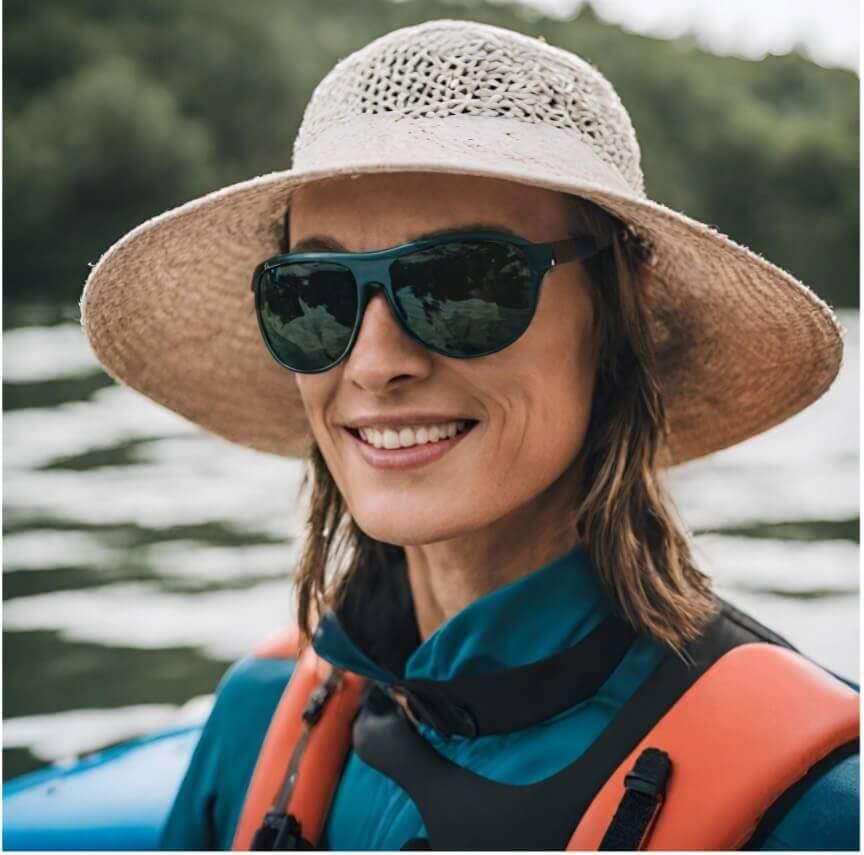Certainly! Here’s how you can include the link using the anchor text “kayaking basics”:
“When planning a kayaking adventure, it’s important to give careful consideration to what to bring along. The right gear can mean the difference between a satisfying day on the water and a potentially hazardous situation. Paddling through serene waterways or tackling more challenging courses requires not just skill but also a well-curated list of equipment and essentials that ensure safety and enjoyment. From the kayak itself to the very paddle in your hands, each item plays a pivotal role in your aquatic excursion. For those just starting out, or even for experienced paddlers looking for a refresher, familiarizing yourself with the basics of kayaking can help ensure you have all the necessary gear for a successful trip.”

Personal items and clothing are equally important when kayaking. Clothing that suits the weather and water conditions can protect against the elements and help in avoiding situations like hypothermia. Additional accessories such as sun protection, hydration sources, and emergency whistles add layers of safety and comfort. Pre-trip preparation, including checking weather forecasts and knowing local waterways, enhances one’s readiness for the journey ahead.
Key Takeaways
- Suitable equipment is crucial for a safe and enjoyable kayaking experience.
- Appropriate attire and personal items contribute to comfort and safety on the water.
- Proper planning and preparation are essential for any successful kayaking trip.
Essential Gear and Equipment
When heading out kayaking, one must ensure they have the right equipment for both convenience and safety. From selecting the appropriate kayak to choosing reliable safety gear, each item plays a crucial role in the experience.
Kayaks and Paddles
The choice of a kayak significantly influences the trip. A touring kayak is ideal for long-distance travel, known for its speed and storage capacity. Paddles are equally important; they should be comfortable to hold and appropriate for the kayak’s size and the paddler’s style. For transporting the kayak, a kayak cart or a roof rack may be necessary, ensuring safe and secure movement to and from the water.
Personal Flotation Devices
A personal flotation device (PFD), commonly known as a life jacket, is a non-negotiable item. It’s not just about compliance with safety regulations; PFDs save lives. They should fit snugly yet comfortably, and it’s wise to opt for bright colors for visibility. Additionally, a whistle should be attached to the PFD for emergency signaling.
Safety and Navigation Tools
For safety and navigation, several tools are indispensable. A compass that floats and a waterproof GPS preloaded with map files ensure one remains on course. In emergencies, a bilge pump can help remove water from the kayak, while a spray skirt keeps the paddler dry and the kayak’s cockpit free from water. Lastly, don’t forget to pack signal flares and a whistle to attract attention in case of distress.
Clothing and Personal Items

When kayaking, the right clothing, and personal items are crucial for both comfort and safety. Items such as a hat and sunglasses are essential for sun protection, while dressing appropriately can mean the difference between enjoying your trip and ending up soaked and unhappy.
Dressing for Safety and Comfort
Clothing: For kayakers, the fabric of their clothing is just as important as the style. They should opt for quick-drying, synthetic materials or specialized watersport garments that offer both flexibility and protection against cold water. It’s wise to have a change of clothes stashed in a dry bag in case they get wet. A rain jacket might be a saving grace when the weather turns sour, helping to keep them dry and cozy.
- Head and Eyes: A hat is strongly recommended to shield them from the sun, while sunglasses are necessary to protect their eyes against the glare off the water, ideally ones with UV protection.
- Footwear: Water shoes or sandals with good grip that can get wet are a perfect match for kayaking.
Food, Hydration and Sun Protection
Essentials:
- Sunscreen: A must-have to protect their skin from UV rays, even on overcast days.
- Hydration: Always bring along plenty of water; dehydration is a real risk, especially on hot and active days.
Nutrition:
- Snacks: Energy-boosting snacks like granola bars or trail mix can help keep strength up.
- Meals: For longer trips, packing a lunch or snacks that are high in protein and carbs can be necessary for sustained energy.
With these items, kayakers can ensure that they’re prepared for the various conditions they may encounter while still staying comfortable and enjoying their time on the water.
Preparing for a Kayaking Trip
[insert kayaarm ad here]
When planning a kayaking adventure, it’s crucial to grasp the basic techniques of launching and landing, as well as to understand how to navigate the waters and interpret the weather. These skills ensure one can enjoy the serenity of nature and the excitement of open water safely.
Launching and Landing Techniques
Launching a kayak involves a certain finesse—it’s where the journey begins at the dock or shore. One should position the kayak parallel to the shore or dock, placing the paddle perpendicular to the boat to provide stability. Then, they carefully enter the kayak from the dock or by wading into shallow water. It’s vital to maintain balance and move smoothly to avoid tipping. Alternatively, if you own the dock you are launching from, consider owning a kayak launch system.
- Landing technique, on the other hand, requires paddlers to approach the shore or dock with the kayak’s bow at a slight angle. Decelerating gradually allows them to gently come to a stop. This is where they transition back onto land, which demands equal care to avoid capsizing.
Navigating Waters and Weather
- Paddling technique and understanding currents are key in navigating waters. A strong paddler can use their skills to maneuver through various conditions, ensuring their journey is both efficient and enjoyable. They should also be mindful of changes in the water’s nature, which can impact stability.
- Weather prep is non-negotiable. Checking forecasts and understanding local patterns helps kayakers prepare for sudden changes. Knowledge of weather conditions allows one to choose the right gear, such as dry bags from REI and appropriate clothing. Additionally, carrying a weather radio with the local emergency channel list can provide updates and safety information.
By mastering these techniques and understanding the environment, kayakers are more likely to have a rewarding experience on the water.
Frequently Asked Questions
What are the essentials for a beginner’s kayaking gear list?
For beginners, the essential kayaking gear includes a kayak suited to the water they’ll be paddling on, a paddle of the correct length, a personal flotation device (PFD), and a helmet if they’re navigating rough waters. They should also consider safety equipment and a bilge pump for water evacuation.
What should I pack for a multi-day kayaking adventure?
For multi-day trips, pack additional items like a sleeping bag, tent, portable stove, food supplies, and a map or GPS device. Waterproof bags to keep gear dry are also crucial. One might look into durable and comfortable camping equipment tailored for kayaking.
How do I stay hydrated while paddling all day?
To stay hydrated, carry a large water container or several water bottles, possibly with a water filter for longer journeys. Hydration packs can also be handy for easy access to water without having to stop paddling.
Can you suggest a comprehensive packing list for a kayak camping trip?
A comprehensive list would include personal items, emergency gear such as a first aid kit and repair tools, cooking equipment, food and water provisions, appropriate clothing, navigation tools, and any personal items like a camera or binoculars. Detailed kayak camping packing lists can guide one through this process.
What safety equipment is mandatory for a kayaking excursion?
Mandatory safety equipment includes a PFD, whistle or signaling device, towline for rescues, navigation lights if paddling at dusk or dawn, and a properly fitting helmet for whitewater or surf conditions. Some regions require a bailing device or pump and a personal locator beacon.
What are some pro tips to prepare for a kayak trip?
Check the weather forecast, inform someone about your trip plan, and pack according to the anticipated conditions. Breaking-in new gear prior to the trip can prevent discomfort, and practicing self-rescue techniques can prepare you for potential capsizes.
